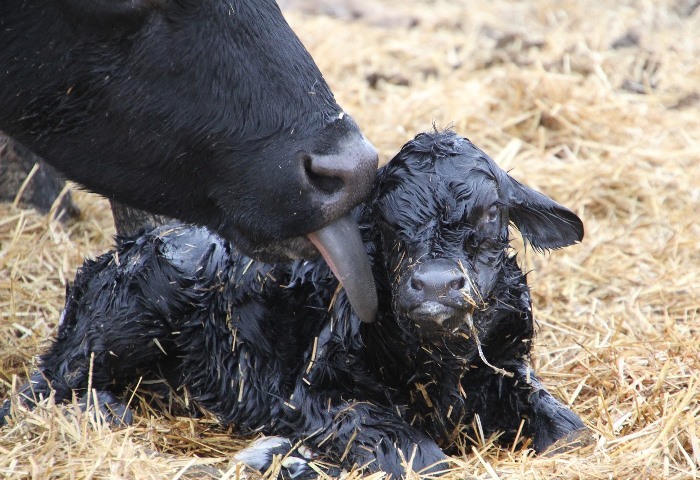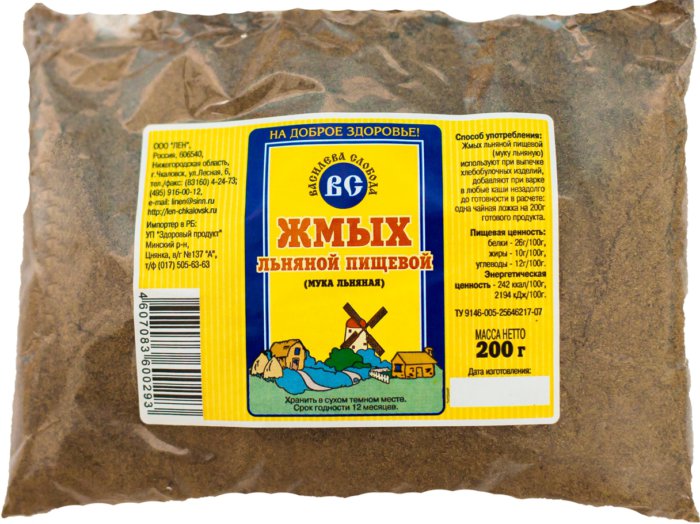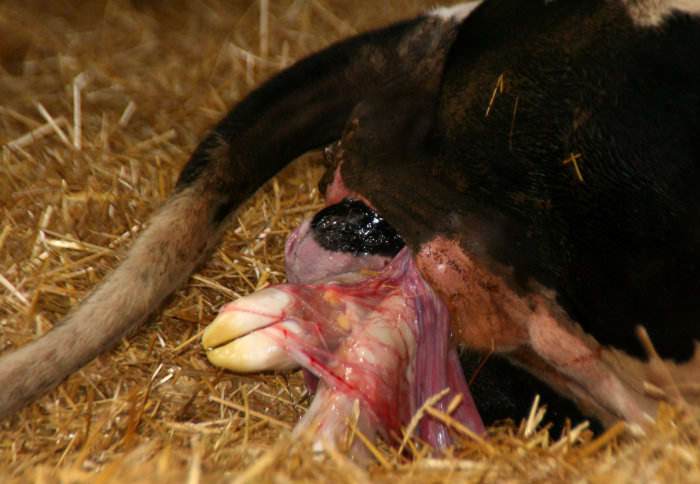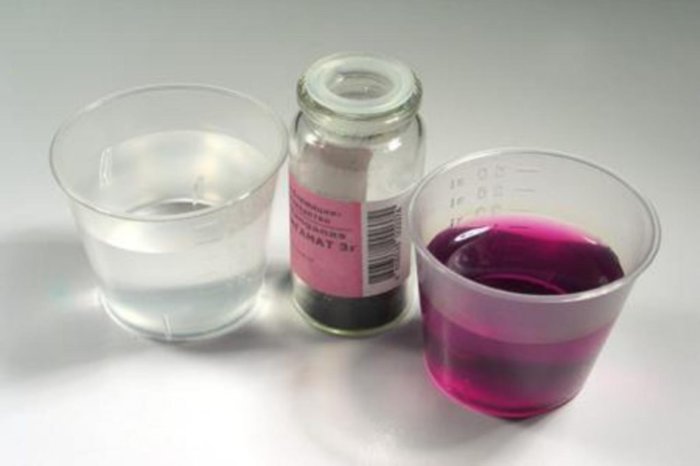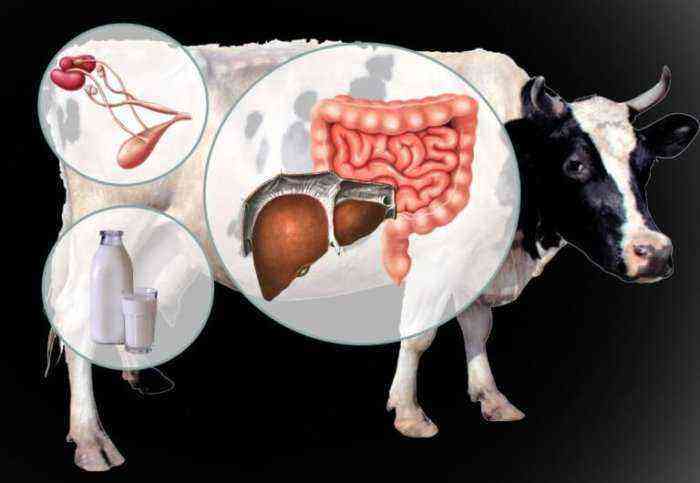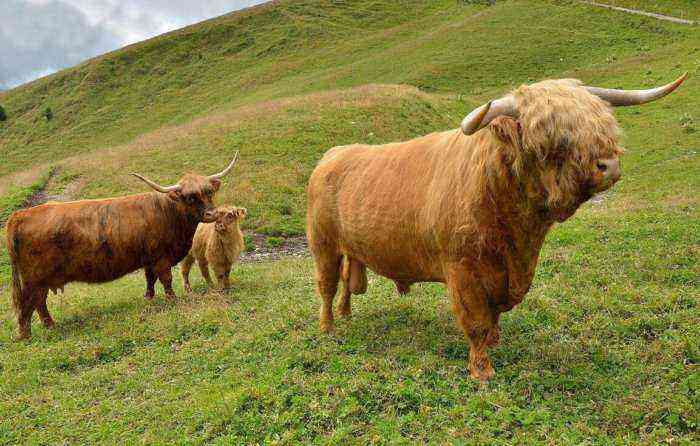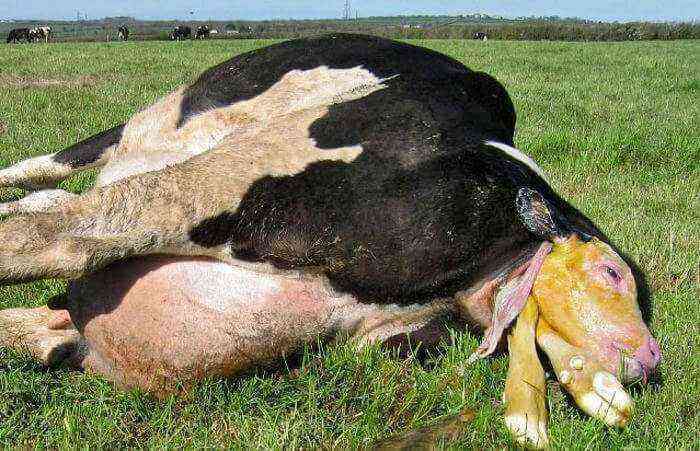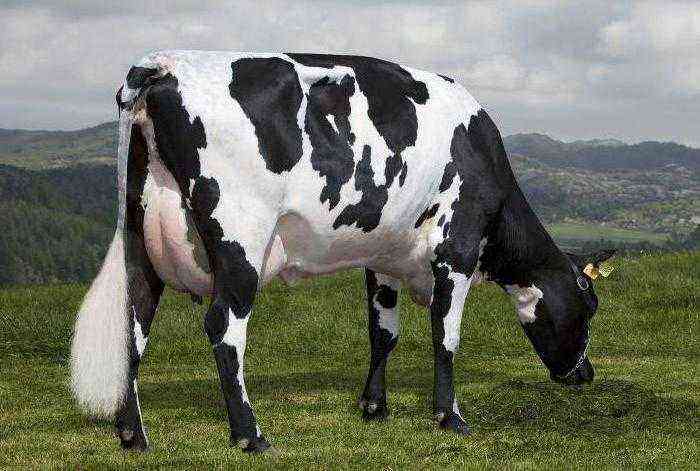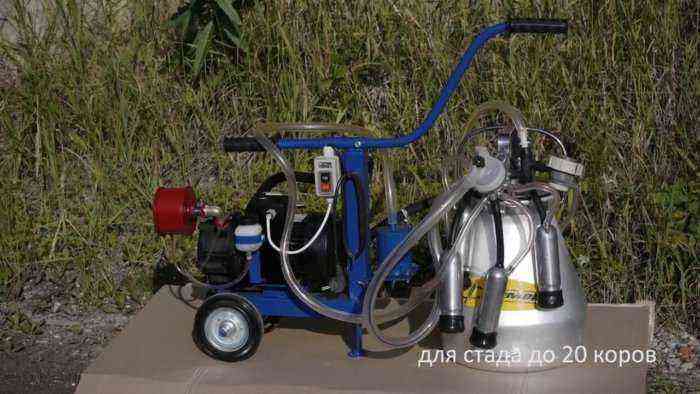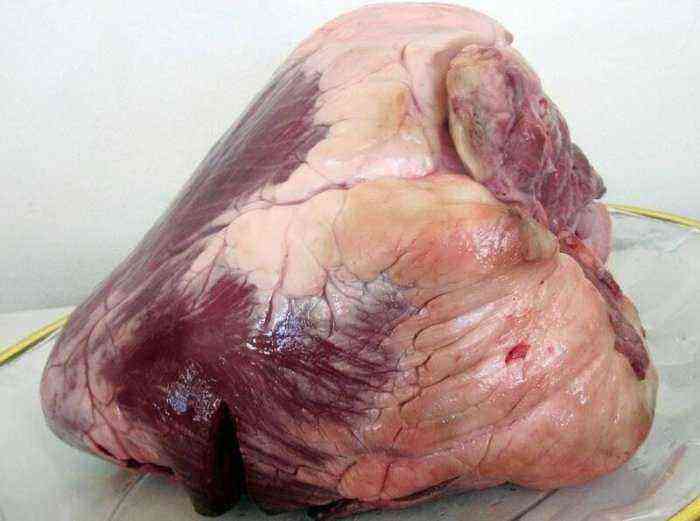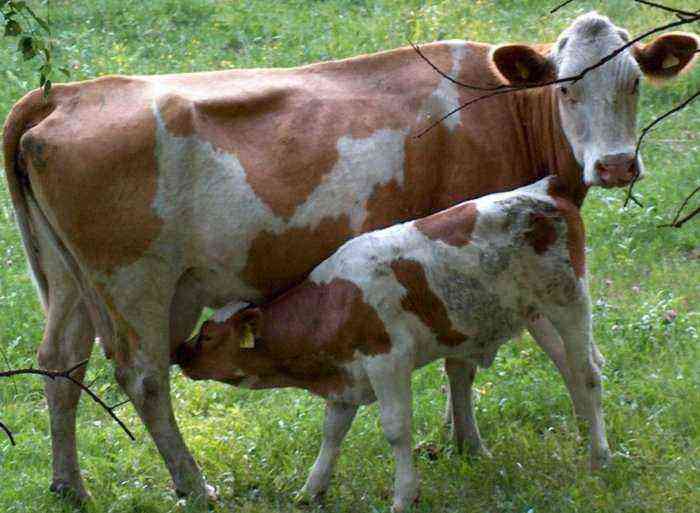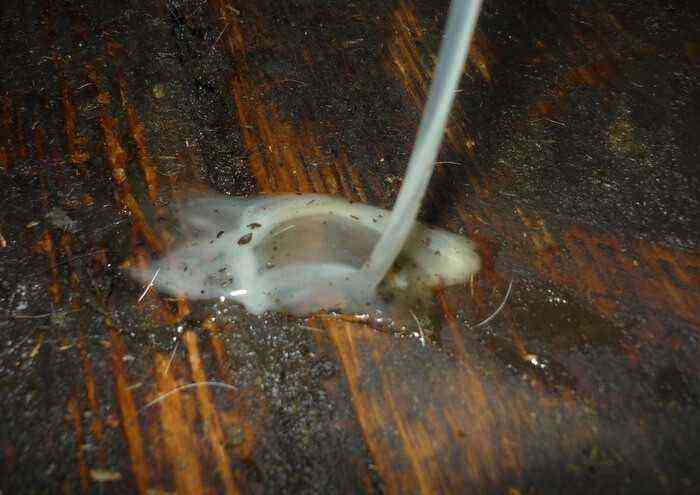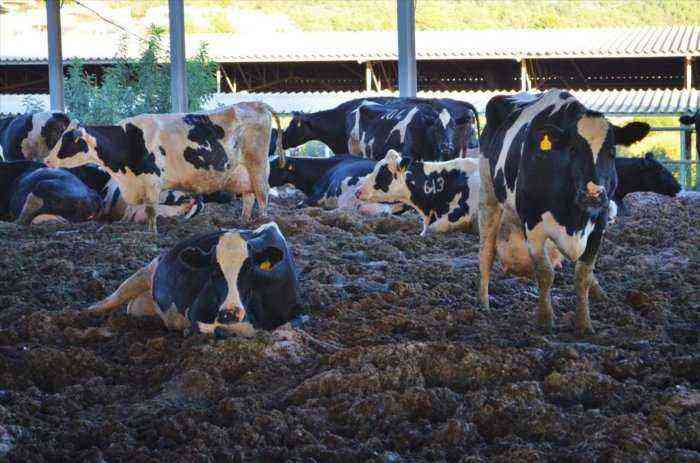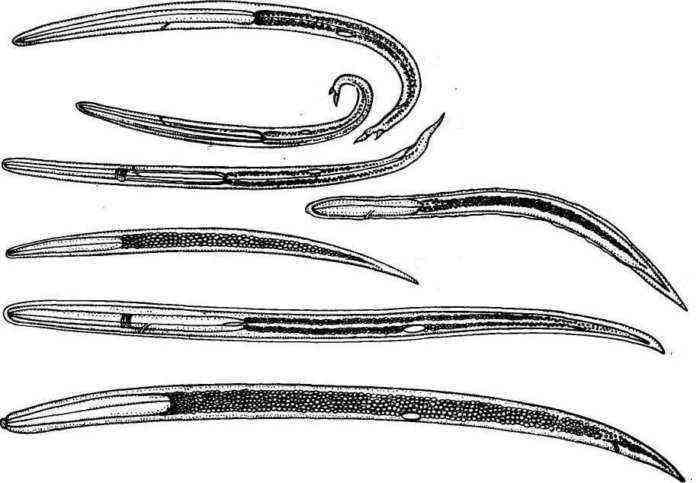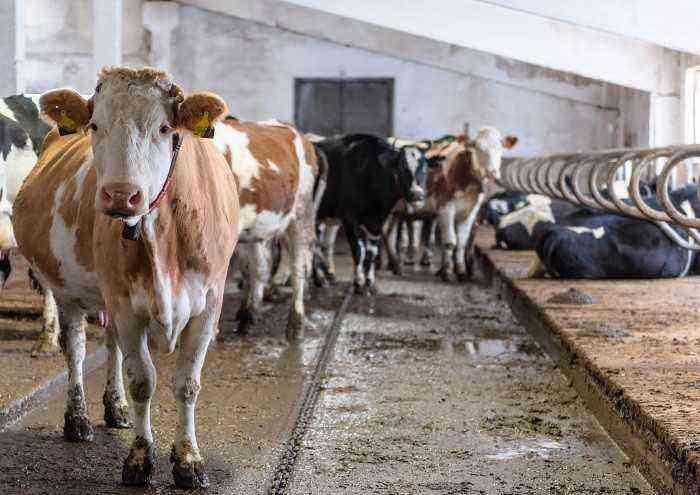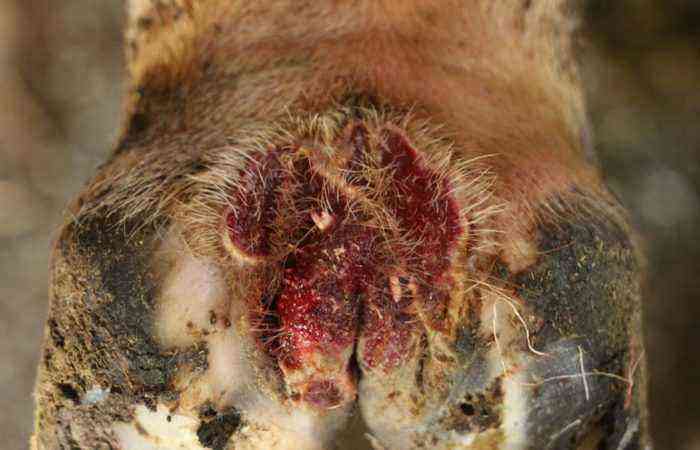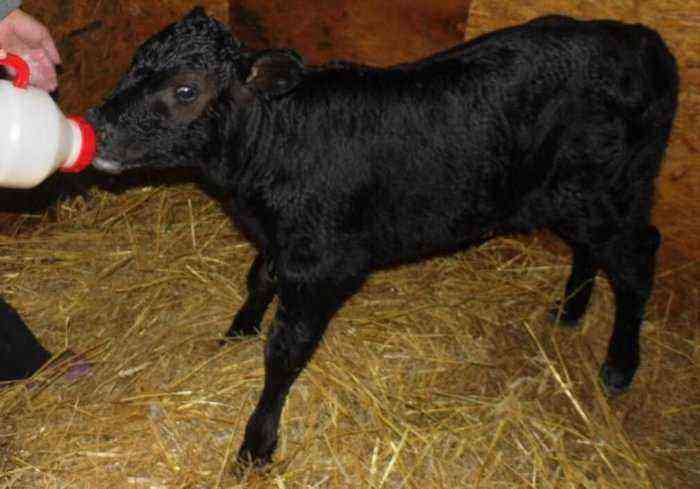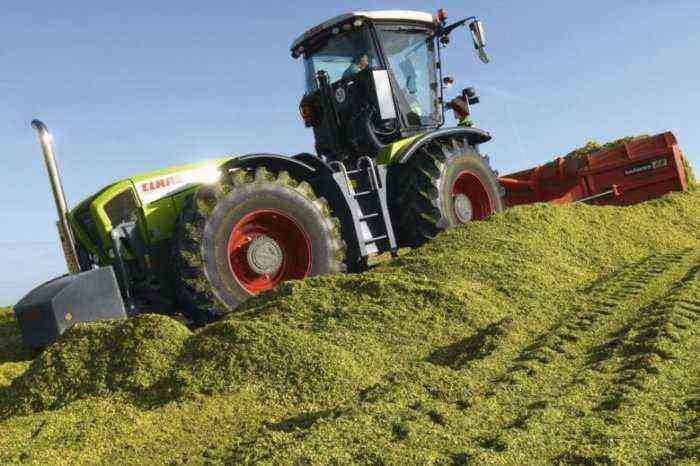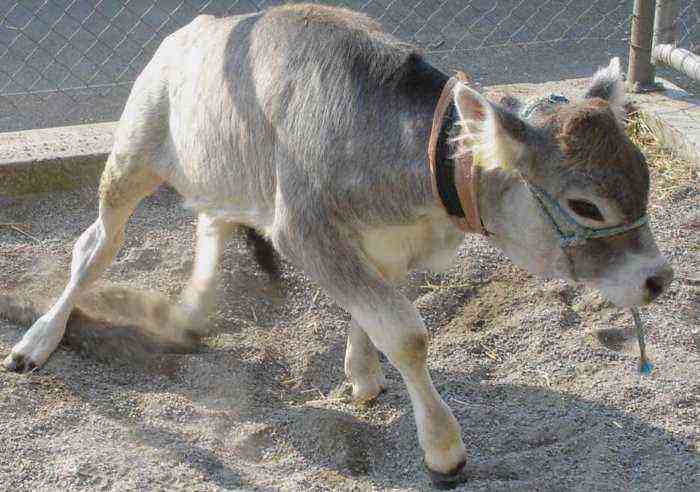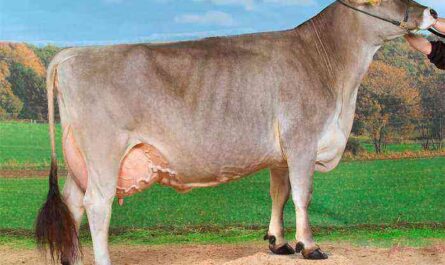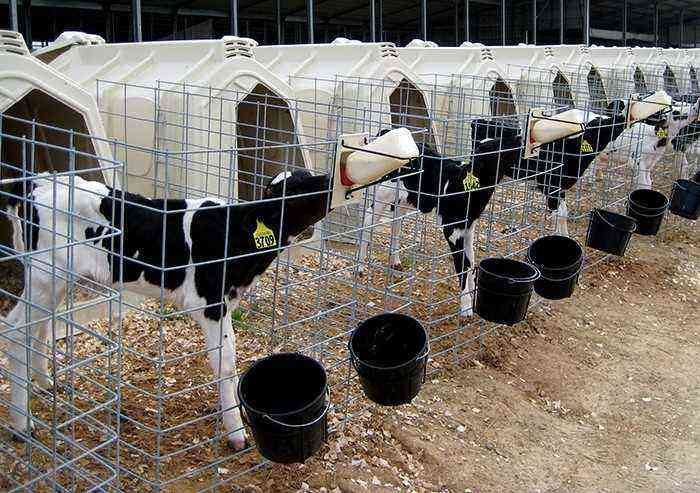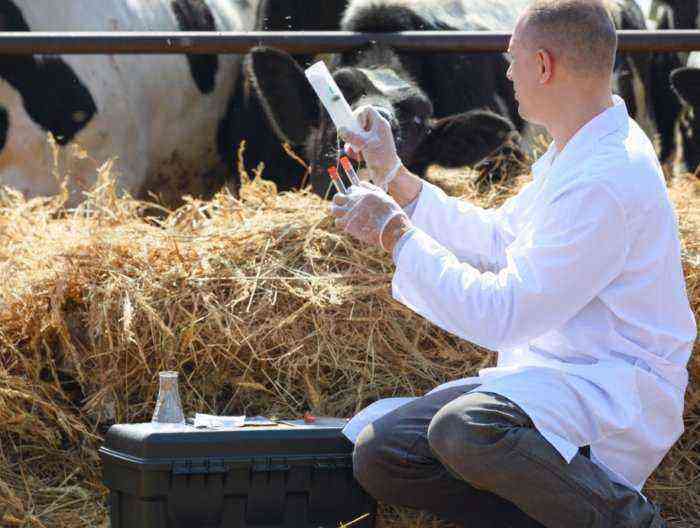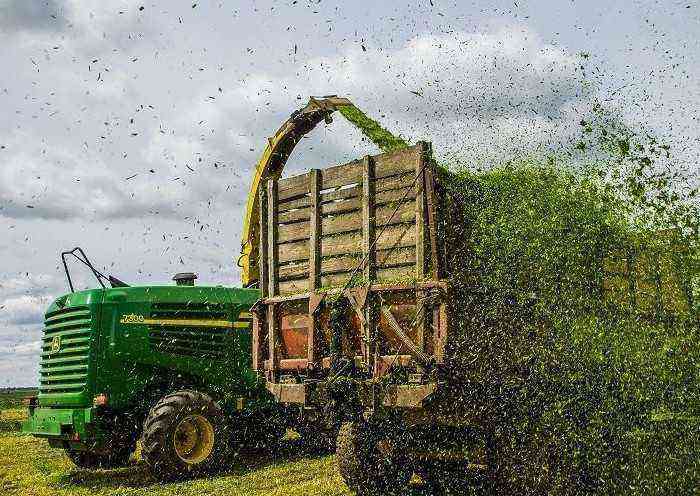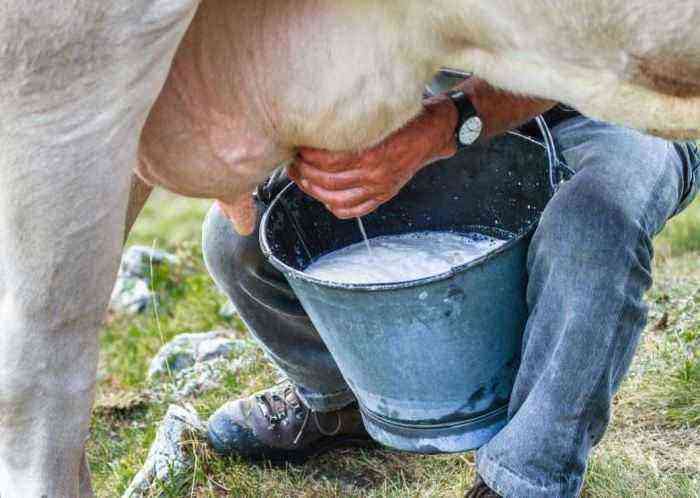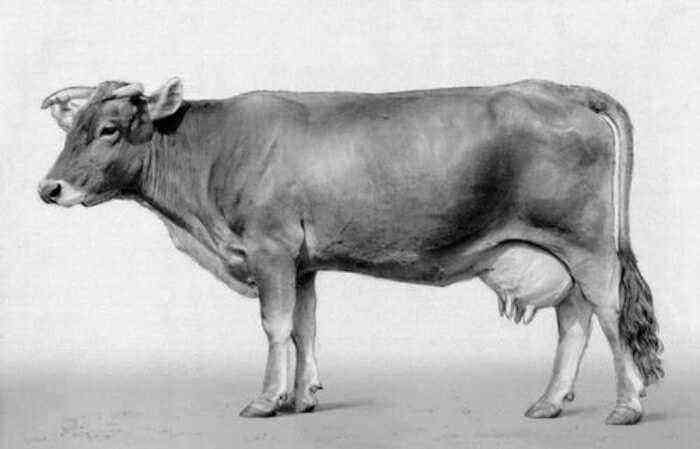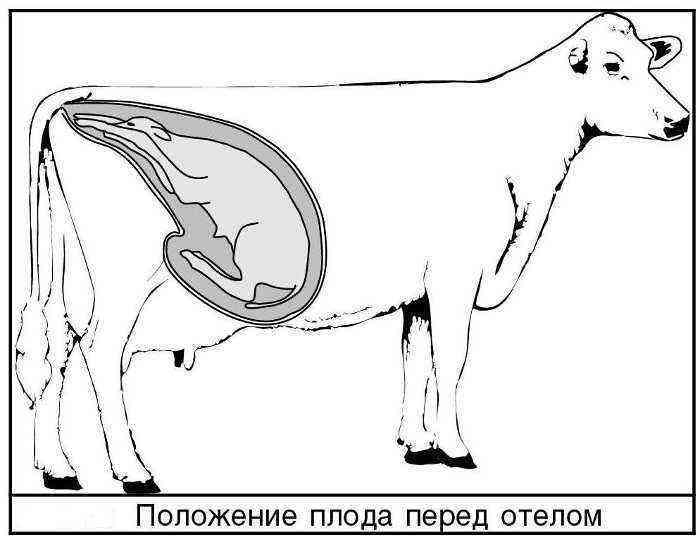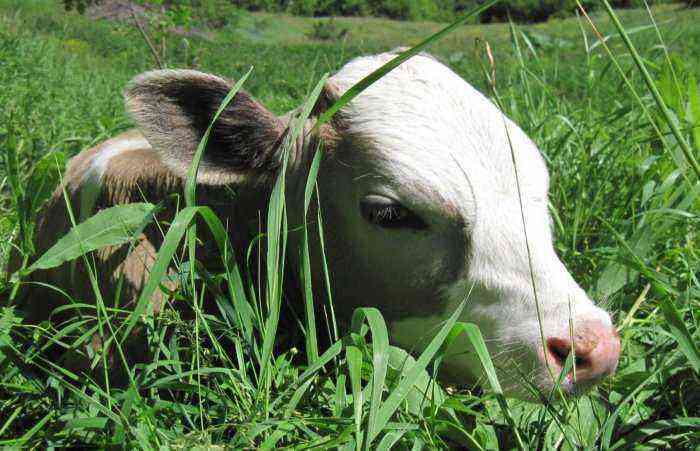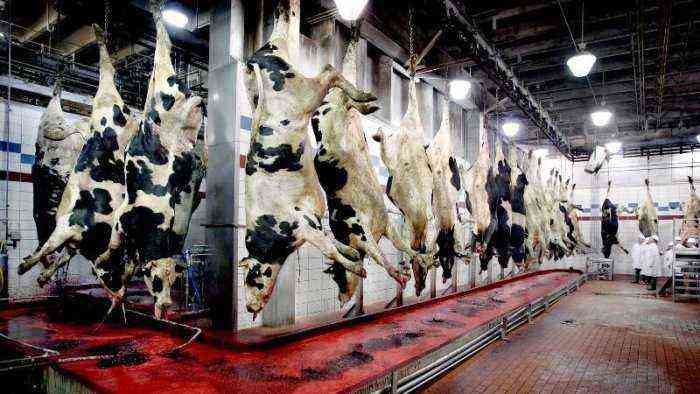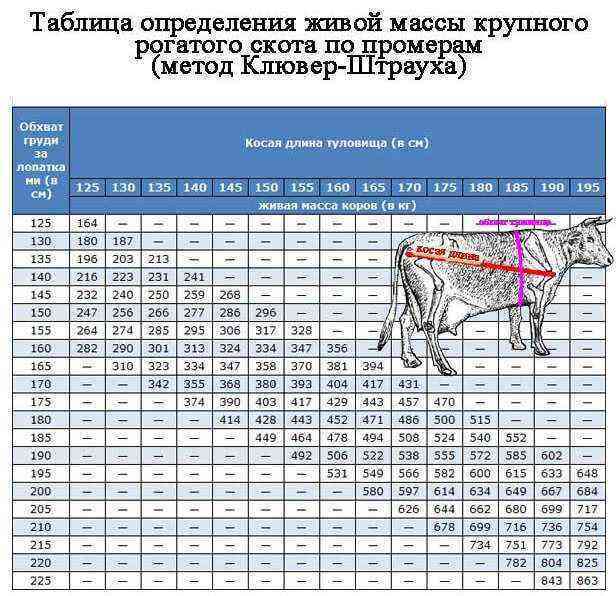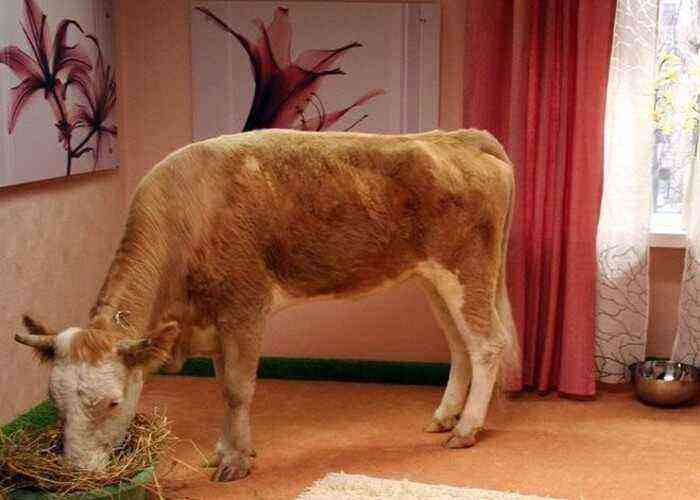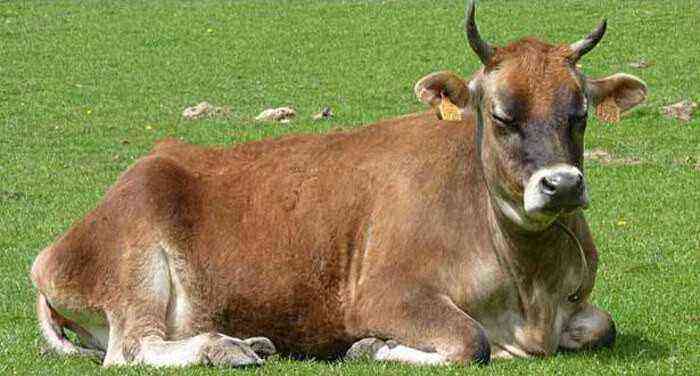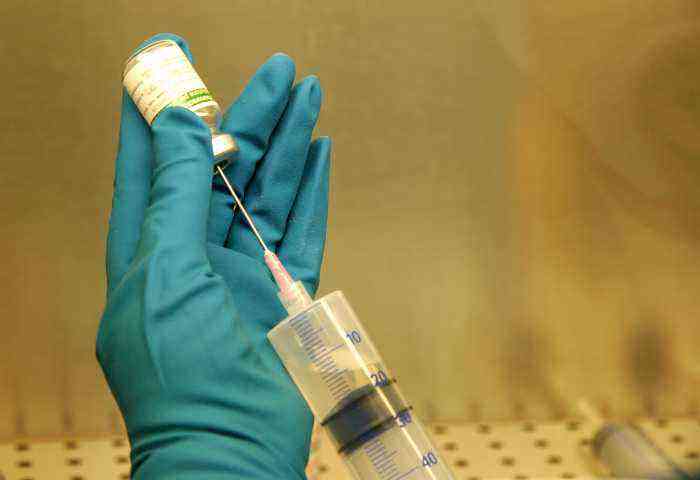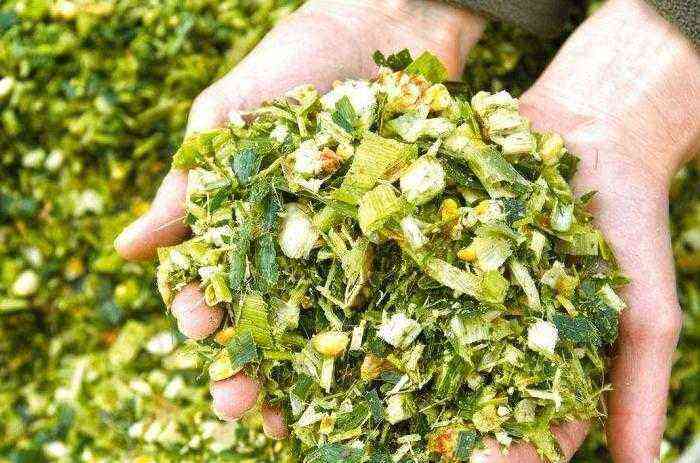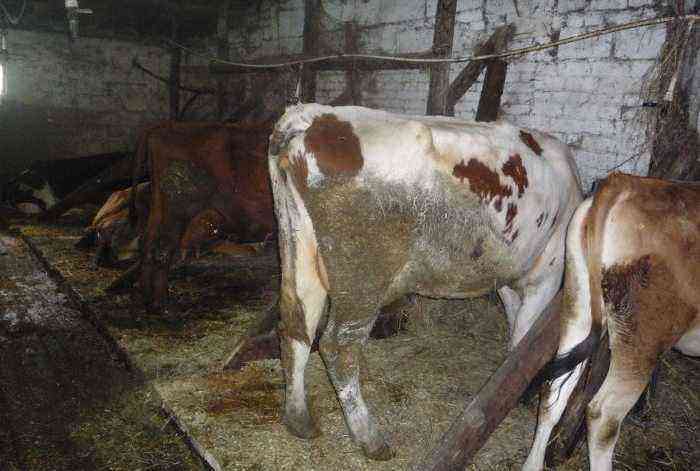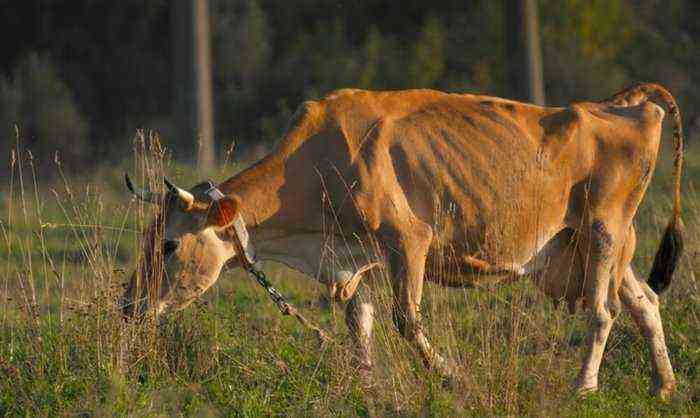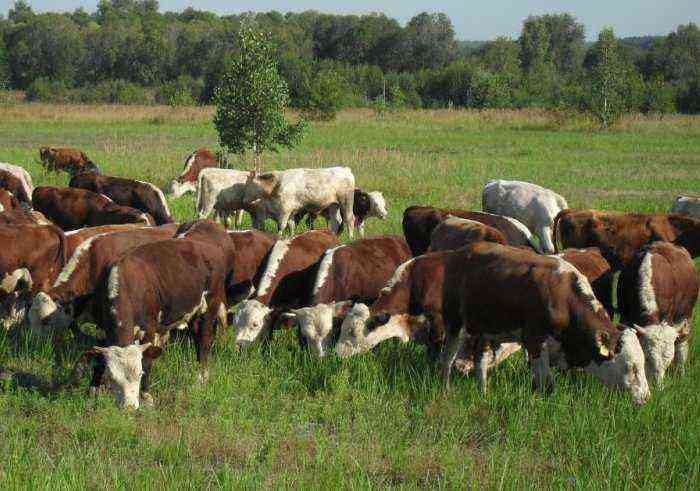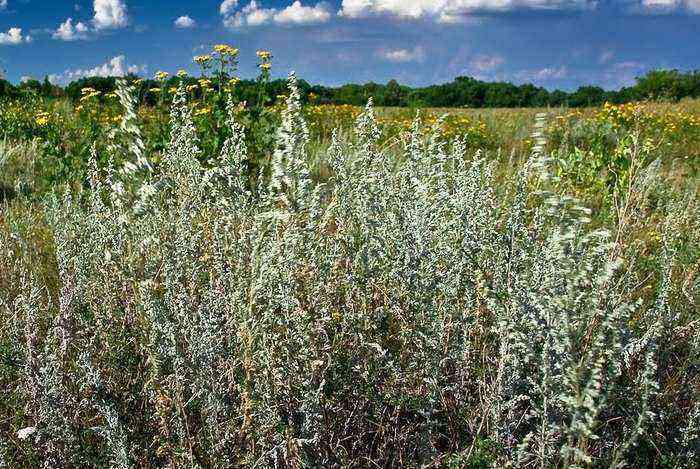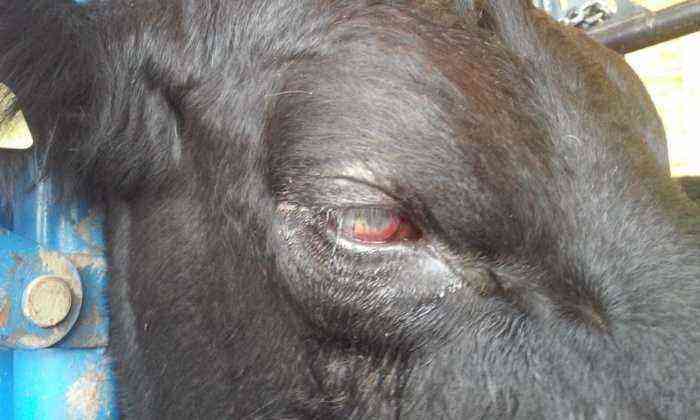Knowledge of how long a cow’s pregnancy lasts should be obtained by every farmer. They are necessary in order to be able to navigate according to the calendar, when calving will approximately occur, because two months before this event, the animal needs to organize a dry period. This article will help novice farmers get the basic concepts of how long cows gestate, how to determine pregnancy without the help of a veterinarian, how to transfer a cow to dead wood and adopt a calf.
Cow with a calf
How long does a cow’s pregnancy last?
How much a pregnant cow walks, every farmer should know, because there are times when an animal overwears a calf or does not finish it. Pregnancy lasts 9 months, to be exact, 285 days. However, this period is indicative. Deviations from the norm up or down are allowed, since sometimes it is not possible to accurately determine the day of fertilization.
Under various conditions of detention, calving may occur ahead of schedule. For example, if the animal is malnourished, then the pregnancy may end a month earlier. And in some cases, the heifer overbears the fetus. Considering all these factors, it is generally accepted that the pregnancy in cows has a duration of 265 to 300 days.
Determination of pregnancy in a cow at home
In the initial stages, pregnancy is not so easy to determine, but with some knowledge in this area, it is still possible. What should you pay attention to? Consider the main factors that help determine the onset of pregnancy in the early stages (up to a month):
- The cow’s behavior changes – she becomes calm, cautious.
- There is an improvement in appetite.
- The coat seems well-groomed, smooth, shiny.
- There is no hunting state.
- Mucous discharge from the vagina appears.
pregnant cow
If the estimated gestational age in cows exceeds one month, then other home diagnostic methods can be used.
- To do this, take a glass of plain water and add a drop of expressed milk to it. In a pregnant cow, milk will completely dissolve in water. If pregnancy has not occurred, the drop will behave differently – it forms a whitish cloud on the surface of the water.
- Take a teaspoon of alcohol and the same amount of freshly expressed milk, mix. If after 5 minutes you notice signs of clotting, the cow is pregnant.
Toward the end of 4 months, it can already be seen with the naked eye that a calf is developing in the womb of a cow. The belly of the cow is slightly rounded. Experienced farmers are already able to feel the movement of the fruit inside. To do this, they put their palm on the peritoneum a little further than the costal arch and 40-50 cm below the hungry fossa. It is advisable to carry out such a diagnosis at dawn, when the animal has not yet had time to eat.
Attention! The examination of the cow for pregnancy by the rectal method should be carried out by a veterinarian. He has a lot of experience and will not harm the health of the animal. In addition, a representative of the veterinary service will be able to identify any pathologies in the development of the embryo.
How long can a cow walk?
As soon as the cows are fertilized, the farmer is obliged to start a special pregnancy calendar for cows. It will help you navigate the timing and determine the approach of calving. This document is used in all large farms. If a cow walks, then it is easy to understand from the calendar how many days she carried a calf.
“Crossed” calf
It is considered the norm if the animal walks for 10-15 days, because when determining the onset of conception, an error is possible. However, if calving does not occur at a later date, then a reason to contact the veterinarian. He must make sure that the heifer and the fetus in her womb are all right.
Reference. In some cases, a cow can walk for more than three weeks. A veterinary examination is necessary in each case of delay in calving by more than 3 weeks in order to exclude freezing and mummification of the fetus.
Transferring a cow to dry wood
The dry period is the time period before calving, when the cow is resting, gaining strength for lactation. At this time, her milk yields decrease, milk production gradually stops. However, it is important to correctly transfer the animal to dead wood. To do this, you need to know exactly what is the gestational age of a cow, because the heifer needs about 60-70 days to rest before calving.
To transfer an animal to dead wood, various methods are used:
- Approximately 70 days before the expected calving date, the cow’s diet is changed.
- Reduce the number of milkings per day.
- Milking is done at a different time, unusual for a cow.
Power at startup
To reduce milk production, it is necessary to remove succulent feed from the animal’s diet. They are replaced with hay. Concentrates are also temporarily excluded. In the warm season, when the heifer grazes on the pasture, they stop feeding her with green mass and concentrated feed. If the milk yield does not decrease, it is recommended to leave only roughage in the diet. During the stall period, it is permissible to introduce flaxseed cake, oatmeal, and wheat bran into the menu of cows during the dry period.
Flax cake
Reducing the number of milkings
Changes in the milk expression schedule lead to a violation of conditioned reflexes. The nervous system of cows reacts to such changes by reducing milk yield. Sometimes it is enough to change the usual mode of pumping, as milk production is noticeably reduced. Many farmers use this technique very successfully. In some cases, it is not even necessary to change the diet of a pregnant cow.
Attention! When starting, you need to be more attentive to the udder. At this time, there is a high probability of developing stagnant processes, mastitis.
As soon as the milk stops coming, which usually takes about 7-12 days, the cow’s nutrition should be adjusted to include all the necessary vitamins, minerals and trace elements. The last two months of pregnancy are very important – at this time the calf gains weight and develops very rapidly. Lack of nutrients can lead to various health pathologies.
generic process
Thanks to the calendar, the farmer knows approximately how long a cow bears a calf, this document helps to prepare in time for its birth. The first step is to take care of the arrangement of the place for calving. What measures should be taken before this important event:
Calf birth
- Clear the stall.
- Make sure you have a clean, soft hay bed.
- Treat the manure grooves with a solution of lime.
- Disinfect the cow’s hooves using a solution of creolin at a concentration of 2%.
Recommendation. In a place intended for calving and stay there of a cow with a calf, there should be no dampness and draft. It is worth taking care of good lighting.
Signs of approaching calving
Shortly before delivery, the cow begins to behave restlessly. She feels discomfort, so it is easy for the farmer to determine the approach of the birth process by the following signs:
- The heifer looks back, steps from foot to foot.
- She is skittish.
- The animal eats much less, drinks little.
- The external genitalia are slightly enlarged.
- A mucous secretion is secreted from the vagina.
- The udder swells, colostrum begins to drip.
- A few hours before giving birth, the cow twitches her skin.
- In summer, the animal may separate from the herd and try to hide in the bushes.
- The sacrum descends.
- The pelvic ligaments are relaxed.
- The cow lies for a long time and mooing.
A sure sign of the onset of labor is the cow lying on its side (usually on the left). At this time, it is necessary to prepare everything that may be needed during calving – towels, warm water, soap, potassium permanganate solution at a concentration of 1%, iodine solution (5%), scissors.
Manganese solution
How to properly take a calf?
First, a fetal bladder will appear from the cow’s vagina. It will break on its own if the animal has intense attempts. If labor activity is weak, then help is needed. The fetal bladder should be torn or incised. If the calf goes forward with its limbs, this is considered the norm. In this case, he will not need additional help. Normal labor activity lasts from half an hour to an hour (in first-calf heifers).
The intervention of a veterinarian will be needed if the cow has weak attempts, and more than half an hour has passed since the waters left. Slow calf exit and misdirection of fetal movement are red flags. The help of a doctor in this case is necessary. The calf is taken carefully and laid on a soft bedding, its airways are freed from mucus. The umbilical cord is tied and cut with sterile scissors. The remaining end is immersed in a solution of iodine. Then the calf is transferred to the muzzle of the mother, giving her the opportunity to lick it.
How much a pregnant cow walks, every farmer should know. Accurate fertilization information should be recorded on a calendar. This will help to correctly determine the time of entry into the dead wood and prepare for calving.

